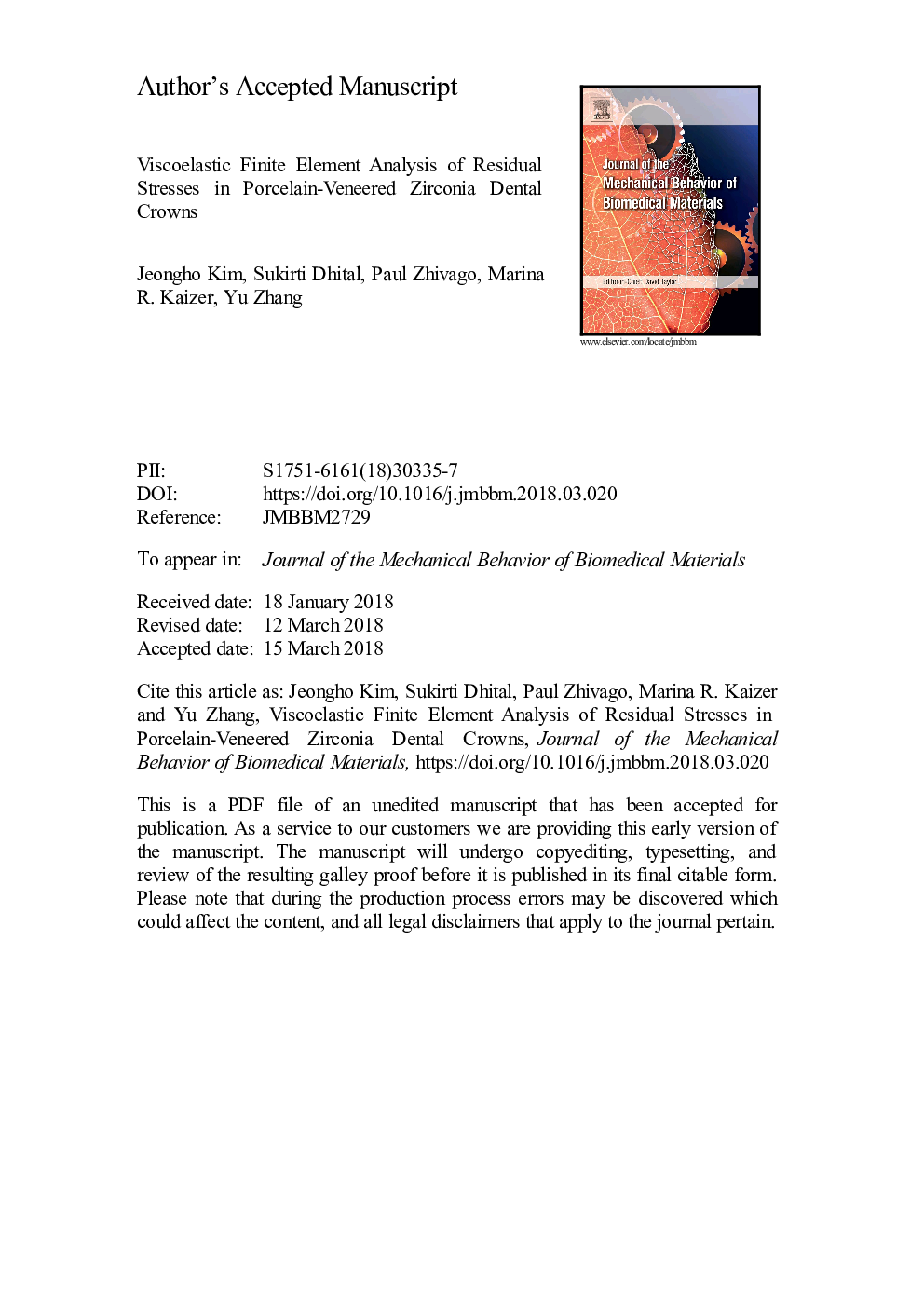| Article ID | Journal | Published Year | Pages | File Type |
|---|---|---|---|---|
| 7207061 | Journal of the Mechanical Behavior of Biomedical Materials | 2018 | 25 Pages |
Abstract
The main problem of porcelain-veneered zirconia (PVZ) dental restorations is chipping and delamination of veneering porcelain owing to the development of deleterious residual stresses during the cooling phase of veneer firing. The aim of this study is to elucidate the effects of cooling rate, thermal contraction coefficient and elastic modulus on residual stresses developed in PVZ dental crowns using viscoelastic finite element methods (VFEM). A three-dimensional VFEM model has been developed to predict residual stresses in PVZ structures using ABAQUS finite element software and user subroutines. First, the newly established model was validated with experimentally measured residual stress profiles using Vickers indentation on flat PVZ specimens. An excellent agreement between the model prediction and experimental data was found. Then, the model was used to predict residual stresses in more complex anatomically-correct crown systems. Two PVZ crown systems with different thermal contraction coefficients and porcelain moduli were studied: VM9/Y-TZP and LAVA/Y-TZP. A sequential dual-step finite element analysis was performed: heat transfer analysis and viscoelastic stress analysis. Controlled and bench convection cooling rates were simulated by applying different convective heat transfer coefficients 1.7E-5â¯W/mm2 °C (controlled cooling) and 0.6E-4â¯W/mm2 °C (bench cooling) on the crown surfaces exposed to the air. Rigorous viscoelastic finite element analysis revealed that controlled cooling results in lower maximum stresses in both veneer and core layers for the two PVZ systems relative to bench cooling. Better compatibility of thermal contraction coefficients between porcelain and zirconia and a lower porcelain modulus reduce residual stresses in both layers.
Related Topics
Physical Sciences and Engineering
Engineering
Biomedical Engineering
Authors
Jeongho Kim, Sukirti Dhital, Paul Zhivago, Marina R. Kaizer, Yu Zhang,
